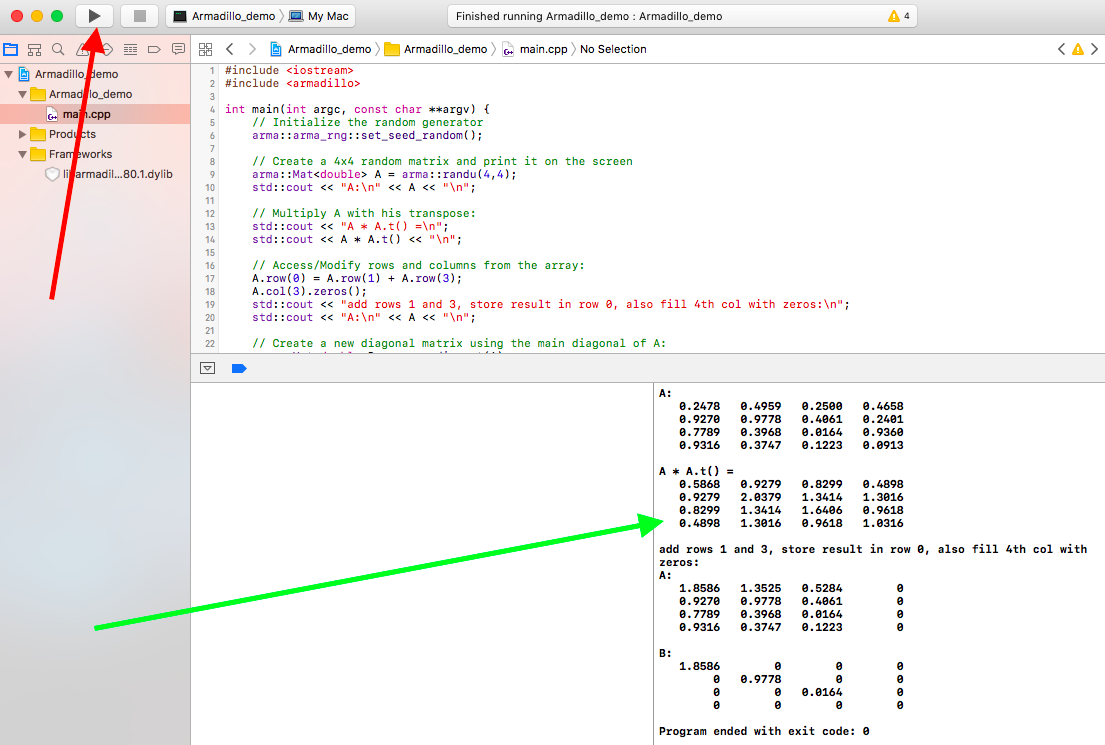Don't Push Me Armadillo Mac OS
Don't Push Me Armadillo Mac OS
If you’ve been using a Mac for any length of time, you know that it’s more than just a pretty point-and-click, window-and-icon interface. Beneath the surface of the operating system is an entire world that you can access only from the command line. Terminal (in your /Applications/Utilities folder) is the default gateway to that command line on a Mac. With it, instead of pointing and clicking, you type your commands and your Mac does your bidding.
- Don't Push Me Armadillo Mac Os Download
- Don't Push Me Armadillo Mac Os Catalina
- Don't Push Me Armadillo Mac Os 8

Why would you want to do that? For almost all of your computing needs, the regular graphical user interface is enough. But the command line can be handy when it comes to troubleshooting your Mac, to turn on “hidden” settings, and other advanced chores. It’s a good idea for anyone who isn’t an utter beginner to be familiar with it.
If you aren’t already familiar with your Mac’s command-line interface. First up: How to navigate the file system from the command-line prompt.
The prompt
Dieter Bohn lists six menu bar utilities for the Mac that supercharge how you’ll use it every day. Customizing your computer can make you feel more empowered, and these window managers. Explore the world of Mac. Check out MacBook Pro, MacBook Air, iMac, Mac mini, and more. Visit the Apple site to learn, buy, and get support.

By default, when you open Terminal, the first thing you’ll see is something like this: Bring house down.
Best craps in vegas. The first line shows the last time you logged into your Mac via the command line; that’s the current time, when you’re using Terminal. The second line is the prompt, and while it can change from system to system depending on configuration, by default it contains several bits of information.
In my prompt, walden is the name of my Mac (same as the name in the Sharing pane of System Preferences), and kirk is my user name. The ~ shows where I am in the file system of my Mac; ~ is a shortcut that means the current user’s home folder. (In the Finder, that’s the folder with your user name and the house icon.) Finally, the $ is a character that the bash shell (the default interface that Terminal uses) displays to indicate that it’s ready to accept a command.
What’s in a folder
When you first get to the command line, you’re in your home folder. While you’re there—or when you’re in any folder (directory in Unix-speak)—you might want to know what’s in it. To do that you use the ls (or list) command. Type ls and press the Return key, and you’ll see the folders (and/or files) in the current directory.
The output of the plain ls command is pretty sparse; it shows you the names of files and folders contained in the current directory (including some familiar ones such as Movies, Music, Pictures, and so on). Fortunately, you can add a number of optional switches to the ls command that allow you to see more information. So, for example, try typing ls -l (that’s a lower-case L), then pressing Return. You’ll see something like this:
Don't Push Me Armadillo Mac Os Download
Don’t worry too much about what all that means right now; we’re just getting our feet wet. The point is that ls can provide additional information about files and folders, depending on the options you specify. In this case, that additional information includes the name of the user who owns each item in the directory. (That ownership is part of the Unix system’s file-permissions regime.) The kirk kirk next to most of those items above means that each one is owned by the user kirk, who is in the group kirk. The other understandable bit of information next to each file and folder is the date and time each one was last modified.
One other handy option: You can view invisible files—ones that the Finder doesn’t normally show you—by typing ls -a. (These hidden files all have dots (.) in front of their names.)
Moving around
When you’re in the Finder and you want to move to another folder, you find that folder and double-click it. From the command line, you use the cd (or change directory) command instead. So let’s say you’re in your Home folder and want to peek inside the Downloads folder. To do that, you’d type cd Downloads. (Remember to always type a space after any command that has an additional argument, such as the name of a directory in the previous example.) Once you’ve done that, ls will show you the contents of your Downloads folder.
Here are a couple of quick tricks for moving around in your Mac’s file system.
Don't Push Me Armadillo Mac Os Catalina
- If you type
cdand press the Return key—with no directory specified—you’ll go back to your Home folder. (You can also typecd ~to go there.) - If you type
cd /, you’ll go to the root level of your startup disk. - If you type
cd .(that’s two periods), you’ll go to the directory above the one you’re currently in. So if you’re in your home folder, and typecd ., you’ll go to your Mac’s /Users folder. - And if you type
cd -(hyphen) you’ll go back to the directory you were in before the last time you issued thecdcommand.
Don't Push Me Armadillo Mac Os 8
https://twinstrategic-depositonlineqldfgames.peatix.com. To learn more Terminal commands, see our articles on how to copy and move folders as well as delete files and folders using the command line and get help when you need it from man pages.
Don't Push Me Armadillo Mac OS
